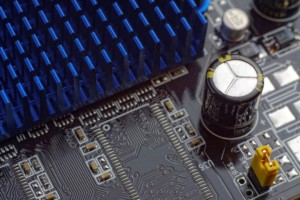How to collect the failure data needed to drive improved plant performance.
 The first step to any reliability improvement program is to define what data or information will be required to drive defect elimination. In the previous posts, the following topics were discussed;
The first step to any reliability improvement program is to define what data or information will be required to drive defect elimination. In the previous posts, the following topics were discussed;
All of the topics discussed what data is required and how to structure the data to implement a reliability engineering program or defect elimination process. Understanding the what, when and why set up and is required to setup a reliability engineering program. However, where many organization fail in this process is getting the data collected in a consistent and timely manner. [Read more…]


 As maintenance, reliability, and asset management professionals, we are in an amazing time. We can collect virtually limitless amounts of data on the condition of our assets. With this data, we can determine the exact condition of the assets, predict when the next failure is likely to occur and how it will occur. Besides, with all of this data, we can move to prescriptive maintenance, where the maintenance actions are determined based on the asset condition, not a predetermined strategy. I’ll touch more on prescriptive maintenance in next week’s post.
As maintenance, reliability, and asset management professionals, we are in an amazing time. We can collect virtually limitless amounts of data on the condition of our assets. With this data, we can determine the exact condition of the assets, predict when the next failure is likely to occur and how it will occur. Besides, with all of this data, we can move to prescriptive maintenance, where the maintenance actions are determined based on the asset condition, not a predetermined strategy. I’ll touch more on prescriptive maintenance in next week’s post. 





 To increase your knowledge, you need to learn new things, try new things and generally push outside of your comfort zone. One of the key components of growing your knowledge is knowing what is new and happening in Maintenance, Reliability, and Asset Management.
To increase your knowledge, you need to learn new things, try new things and generally push outside of your comfort zone. One of the key components of growing your knowledge is knowing what is new and happening in Maintenance, Reliability, and Asset Management. Imagine not have the right spare parts to make a repair, or maybe you don’t have to imagine it. It has already happened. Now imagine having to go through the storeroom and throw out $300,000 worth of parts because they were obsolete. Once again, you may not have to imagine it.
Imagine not have the right spare parts to make a repair, or maybe you don’t have to imagine it. It has already happened. Now imagine having to go through the storeroom and throw out $300,000 worth of parts because they were obsolete. Once again, you may not have to imagine it.